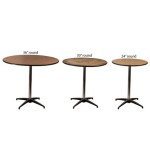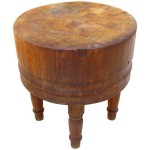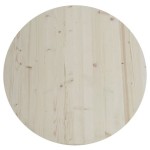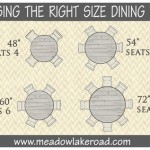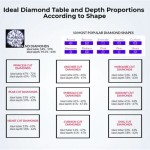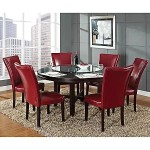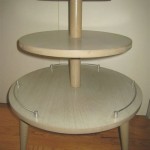The Versatility of Mid-Century Round Dining Table and Chairs
The mid-century modern design movement, spanning roughly from the mid-1930s to the mid-1960s, continues to influence contemporary interiors. One of the enduring hallmarks of this era is the round dining table and chair set, a combination that offers both aesthetic appeal and practical functionality. Its versatility allows it to seamlessly integrate into various design schemes and adapt to diverse lifestyle needs.
A key advantage of the round dining table is its inherent promotion of conversation and connection. The absence of a head of the table creates an egalitarian atmosphere, encouraging interaction amongst all seated individuals. This circular arrangement fosters a sense of intimacy and togetherness, making it ideal for family meals and social gatherings. The compact nature of smaller round tables also makes them suitable for apartments or smaller dining areas, maximizing space without sacrificing seating capacity.
Mid-century designers prioritized organic forms and natural materials. Round dining tables often feature beautifully grained wood such as teak, walnut, or rosewood. These materials add warmth and sophistication to the dining area, while the circular shape softens the overall aesthetic, contrasting with the clean lines often found in mid-century architecture and furniture. The accompanying chairs frequently incorporate tapered legs and sculpted backs, further enhancing the organic feel and visual appeal.
The versatility of mid-century round dining sets extends to their adaptability to various design styles. While they are a quintessential element of mid-century modern interiors, they can be incorporated into contemporary, eclectic, and even traditional spaces. Pairing a round table with iconic mid-century chairs like the Eames molded plastic chairs or Wegner wishbone chairs creates a cohesive and timeless look. Alternatively, mixing the table with different chair styles, such as upholstered armchairs or industrial metal stools, can create a more eclectic and personalized aesthetic.
Beyond aesthetics, the functionality of round dining tables contributes to their enduring popularity. The absence of corners allows for flexible seating arrangements and easy navigation around the table. This is particularly beneficial in smaller spaces where maximizing flow and movement is crucial. Round tables can also accommodate extra guests more readily than rectangular or square tables, making them an excellent choice for those who frequently entertain.
The range of sizes available further enhances the versatility of round dining tables. Smaller tables are ideal for intimate dinners or breakfast nooks, while larger tables can comfortably accommodate larger families or dinner parties. Extendable round tables offer an additional layer of flexibility, allowing homeowners to adjust the table size based on their current needs. This adaptability makes them a practical and space-saving solution for those who require both everyday functionality and the capacity to host larger gatherings.
The enduring appeal of mid-century modern design is a testament to its timelessness and adaptability. Mid-century round dining table and chair sets exemplify this enduring appeal, seamlessly blending form and function. Their ability to foster connection, enhance various design schemes, and adapt to diverse spatial needs ensures their continued relevance in contemporary interiors.
The selection of appropriate chairs plays a crucial role in the overall aesthetic and functionality of the dining set. Classic mid-century chair designs often feature organic shapes, tapered legs, and the use of natural materials such as wood and leather. These chairs complement the warm and inviting ambiance created by the round table. However, the versatility of the round table allows for experimentation with different chair styles to achieve a desired design aesthetic. Mixing and matching chairs can add visual interest and create a more personalized and eclectic look.
Another factor to consider is the size and scale of the dining set in relation to the surrounding space. A smaller round table is well-suited for compact dining areas or apartments, maximizing space without compromising functionality. Larger round tables are ideal for spacious dining rooms, creating a focal point for gatherings and entertaining. Careful consideration of the proportions of the table and chairs in relation to the room's dimensions is essential to achieve a balanced and harmonious aesthetic.
The durability and quality of materials used in the construction of the table and chairs are also important considerations. Solid wood tables, while requiring more care and maintenance, offer longevity and a timeless appeal. Other materials, such as laminate or glass, offer a more contemporary look and require less maintenance. The choice of materials should reflect both aesthetic preferences and lifestyle needs.
Finally, the finish of the table and chairs contributes significantly to the overall design aesthetic. Natural wood finishes showcase the beauty of the wood grain and add warmth to the dining area. Painted finishes, such as white or black, can create a more modern or minimalist look. The finish should complement the surrounding décor and contribute to the desired ambiance of the dining space.

How To Style Tulip Dining Tables Where Buy

Mykonos Mid Century Dining Set Countryside Amish Furniture
/fit-in/500x500/media/catalog/product/dining/tables/202502281819447800.jpg?strip=all)
Stylish And Versatile Dining Tables Povison

Lttromat Round Dining Table 42 Inch Tulip Pedestal For Mid Century End Coffee Office Living Room

Mid Century Modern Caramel Wood Oval Dining Table Rc Willey

How To Style Tulip Dining Tables Where Buy

Free Lttromat Round Dining Table 31 5 Inch Artificial Marble Pedestal For Mid Century End Coffee Office Living Room White Com

Round Granvia Dining Table With Glass Top And Pedestal Base 193511bg

Dinah 5 Piece Round Solid Wood Dining Set Walnut

15 Best Dining Tables For Small Spaces
Related Posts

